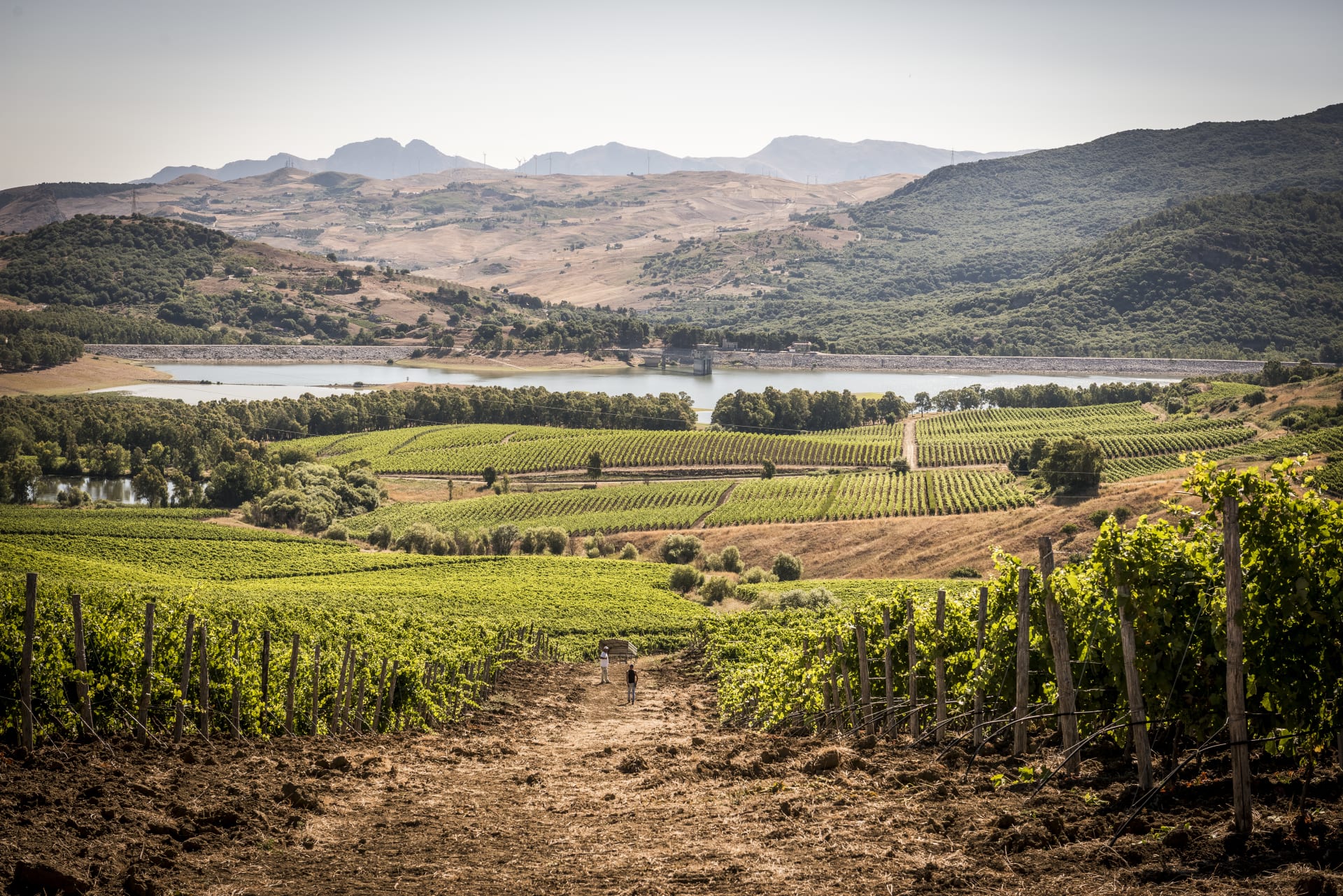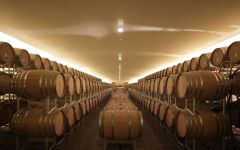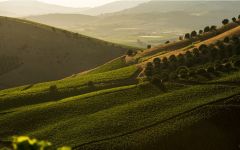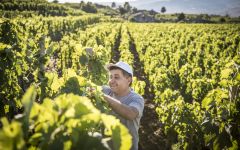Cusumano Salealto 2018
-
Robert
Parker -
Wine &
Spirits -
Wine
Spectator
Last call - only 8 left!



Product Details
Your Rating
Somm Note
Winemaker Notes
Bright yellow. A unique wine, mountainous and Mediterranean at the same time. On the nose, orange, apple and tropical stone fruit. On the palate tangerine, mango, lemon peel and stone salt. Medium bodied with a long finish.
Professional Ratings
-
Robert Parker's Wine Advocate
The 2018 Salealto is a dense, medium to full-bodied white wine with a yellowish golden color. The blend is Insolia, Grillo and Zibibbo. This is a profound and well-constructed wine that reveals ample apricot, poached pear and toasted almond. There are light touches of cinnamon and toasted saffron as well that give the wine an almost exotic personality. It aged on the fine lees for ten months.
-
Wine & Spirits
Salealto is an intriguing wine made from equal parts of inzolia, grillo and zibibbo grown at high elevations in western Sicily. This vintage is reticent and tightly wound at first, then it blossoms with exposure to air, revealing flavors of tangy lemon and grapefruit, blanched almond and citrus skin, all couched in a dense, saline-infused texture that keeps brightening and evolving several days after the bottle was opened. This will be better in a year; there’s lots to unpack here.
-
Wine Spectator
This medium-bodied white is linear and minerally, with lots of upfront saline and chalk aromas and flavors. A spiced profile of Asian pear, blanched almond and blood orange peel emerges through mid-palate, lingering on the fresh finish. Insolia, Grillo and Zibibbo.
Other Vintages
2019-
James
Suckling -
Wine
Enthusiast








The Cusumano winery was established in 2001, when brothers Alberto and Diego, took over the management of the company from their father, Francesco. From day one, the philosophy behind Cusumano has been to emphasize the importance of terroir knowledge, investment in innovative technology, and above all, passion for winemaking.
With the help of an intimate knowledge of the Sicilian terrain and consultant winemaker Mario Ronco, the Cusumano wines are made with 100% estate grown fruit from 4 different territories throughout Sicily, many with grapes that are indigenous to Sicily such as Nero d’Avola and Insolia. The Cusumano family is committed to creating wines that showcase these distinct regions, resulting in the brand becoming the #1 Sicilian wine in the US with 90+ ratings year over year. They were also among the first to adopt innovative glass stoppers, which are easy to open, re-usable and keep the wine fresh.
"Wine, just like people, shows a distinct personality when put it in the right context. That’s why we have travelled all around Sicily in search of the most suitable lands for diverse and high-quality viticulture. The extraordinary variety our land offers is a gift we welcome with devotion and transform into experience. Diversity is a virtue which we cultivate and share with passion." -Diego Cusumano

With hundreds of white grape varieties to choose from, winemakers have the freedom to create a virtually endless assortment of blended white wines. In many European regions, strict laws are in place determining the set of varieties that may be used in white wine blends, but in the New World, experimentation is permitted and encouraged. Blending can be utilized to enhance balance or create complexity, lending different layers of flavors and aromas. For example, a variety that creates a soft and full-bodied white wine blend, like Chardonnay, would do well combined with one that is more fragrant and naturally high in acidity. Sometimes small amounts of a particular variety are added to boost color or aromatics. Blending can take place before or after fermentation, with the latter, more popular option giving more control to the winemaker over the final qualities of the wine.

A large, geographically and climatically diverse island, just off the toe of Italy, Sicily has long been recognized for its fortified Marsala wines. But it is also a wonderful source of diverse, high quality red and white wines. Steadily increasing in popularity over the past few decades, Italy’s fourth largest wine-producing region is finally receiving the accolades it deserves and shining in today's global market.
Though most think of the climate here as simply hot and dry, variations on this sun-drenched island range from cool Mediterranean along the coastlines to more extreme in its inland zones. Of particular note are the various microclimates of Europe's largest volcano, Mount Etna, where vineyards grow on drastically steep hillsides and varying aspects to the Ionian Sea. The more noteworthy red and white Sicilian wines that come from the volcanic soils of Mount Etna include Nerello Mascalese and Nerello Cappuccio (reds) and Carricante (whites). All share a racy streak of minerality and, at their best, bear resemblance to their respective red and white Burgundies.
Nero d’Avola is the most widely planted red variety, and is great either as single varietal bottling or in blends with other indigenous varieties or even with international ones. For example, Nero d'Avola is blended with the lighter and floral, Frappato grape, to create the elegant, Cerasuolo di Vittoria, one of the more traditional and respected Sicilian wines of the island.
Grillo and Inzolia, the grapes of Marsala, are also used to produce aromatic, crisp dry Sicilian white. Pantelleria, a subtropical island belonging to the province of Sicily, specializes in Moscato di Pantelleria, made from the variety locally known as Zibibbo.
